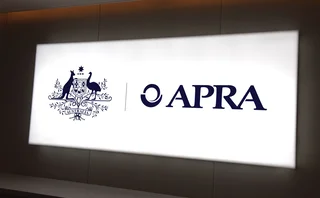
US nationalises Fannie and Freddie
The US government has moved to ‘temporarily’ nationalise stricken mortgage lenders Fannie Mae and Freddie Mac
WASHINGTON, DC – The US government has rescued the mortgage lenders Fannie Mae and Freddie Mac, confirming market expectations by taking responsibility for almost half of the $12 trillion of US mortgage debt.
The move, dubbed ‘conservatorship’, means temporary nationalisation of the two state-sponsored lenders, and marks the moment when the long-presumed unwritten guarantee of the two lenders was finally tested.
Fannie and Freddie had already run up debts of over $1.6 trillion over the past 12 months, mostly as a result of the fall in house prices brought on by the failure of the subprime mortgage sector.
The US government had already agreed to buy up shares in the two lenders, in addition to initiating Treasury protection schemes guaranteeing their debts. Yesterday’s agreement marks the end of that process.
Chairman of the Federal Reserve, Ben Bernanke, said in a statement: “I strongly endorse both the decision by FHFA [Federal Housing Finance Agency] director [James] Lockhart to place Fannie Mae and Freddie Mac into conservatorship, and the actions taken by Treasury secretary [Henry] Paulson to ensure the financial soundness of those two companies.”
He said: “These necessary steps will help to strengthen the US housing market and promote stability in our financial markets. I also welcome the introduction of the Treasury's new purchase facility for mortgage-backed securities, which will provide critical support for mortgage markets in this period of unusual credit-market uncertainty.”
Fannie Mae and Freddie Mac were created by President Roosevelt in 1938, as part of his ‘New Deal’ to provide liquidity to the US mortgage market during the Great Depression, before privatisation in 1968.
Fannie Mae and Freddie Mac – after already undergoing boardroom purges within the past month – are now under the control of the FHFA.
Only users who have a paid subscription or are part of a corporate subscription are able to print or copy content.
To access these options, along with all other subscription benefits, please contact info@risk.net or view our subscription options here: http://subscriptions.risk.net/subscribe
You are currently unable to print this content. Please contact info@risk.net to find out more.
You are currently unable to copy this content. Please contact info@risk.net to find out more.
Copyright Infopro Digital Limited. All rights reserved.
As outlined in our terms and conditions, https://www.infopro-digital.com/terms-and-conditions/subscriptions/ (point 2.4), printing is limited to a single copy.
If you would like to purchase additional rights please email info@risk.net
Copyright Infopro Digital Limited. All rights reserved.
You may share this content using our article tools. As outlined in our terms and conditions, https://www.infopro-digital.com/terms-and-conditions/subscriptions/ (clause 2.4), an Authorised User may only make one copy of the materials for their own personal use. You must also comply with the restrictions in clause 2.5.
If you would like to purchase additional rights please email info@risk.net
More on Regulation
Iosco pre-hedging review: more RFQs than answers
Latest proposals leave observers weighing new clampdown on pre-hedging
FCMs welcome CFTC margin rule ring-fencing clarification
Final rule on separate accounts replicates no-action relief as Republicans strip out gold plate
Stuck in the middle with EU: dealers clash over FRTB timing
Largest banks want Commission to delay implementation, but it’s not the legislator’s only option
Treasury clearing timeline ‘too aggressive’ says BofA rates head
Sifma gears up for extension talks with incoming SEC and Treasury officials
Rostin Behnam’s unfinished business
Next CFTC chair must finish the work Behnam started on crypto regulation and conflicts of interest
European Commission in ‘listening mode’ on potential FRTB changes
Delay or relief measures on the table after UK postpones start of Basel III to 2027
Australian FRTB projects slow down amid scheduling uncertainty
Market risk experts think Apra might soften NMRF regime to spur internal model adoption
EBA to address double-counting caused by new capital floor
Existing EU capital add-ons for model risk would duplicate new Basel floor on internal models







